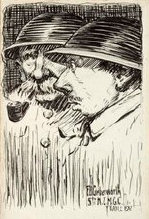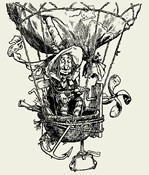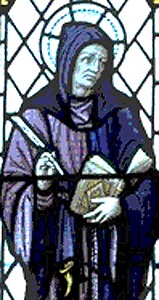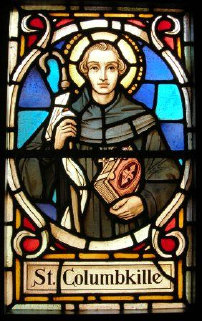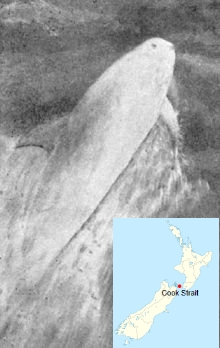






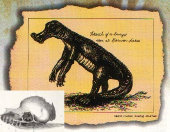
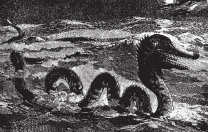
Contact
Home
Loch Ness Monster part 6
1934
continued
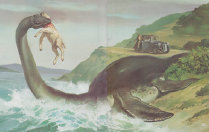
Contents
FILM SHOWN OF LOCH NESS SEA MONSTER
Barrier Miner (Broken Hill, NSW)
Date: January 4, 1934
Page Number: 1
(Special to "The Miner")
LONDON, January 3.
Describing the private screening of the film of the Loch Ness monster the "Times" says
that the pictures were taken on December 12 by three Scottish operators.
The film shows the creature swimming away from the camera
and apparently diving.
The photographers say that they saw seven large lumps on his back, some of which are discernible in the picture.
The
queerest movements are those of the tail or flukes which are notably darker than the monster's body.
Cameramen say that the monster
is 16ft. long, has a grey body and a black tail. It swims at about 10 miles an hour.
In their search at Loch Ness the "Daily Mail's"
investigators intend to use a hydroplane similar to that used to locate submarines.
LOCH NESS MONSTER.
FOOT LIKE HIPPOPOTAMUS.
IMPRESSION OF SPOOR.
Barrier Miner (Broken Hill, NSW)
Date: January 4, 1934
Page Number: 1
(Australian Cable Service.)
LONDON, January 3.
The "Daily Mail" publishes a report of the zoologists of South Kensington Museum on the
cast of the supposed spoor of the Loch Ness monster.
A slab shows two impressions of a four-toed foot, closely resembling that of a
hippopotamus.
Donald Bradman
Frederick Herbert Cumberworth
Early 20th century New Zealand cartoonist who worked in Sydney in the [1890s? and] 1920s and London in
the 1930s.
Queensland Figaro (Brisbane, Qld)
Date: January 6, 1934
Page Number: 11
The unknown monster that inhabits Loch Ness can no longer be classed with the mythical animals seen by gentlemen who should have
"put more water with it." So many reputable witnesses have seen the thing, 16 feet long, or there abouts, that its presence has passed
beyond the realm of doubt. Personally, I am glad I don't live in its immediate neighbourhood, for as its habits and potentialities
are still unknown, who can tell if it mightn't elect to leave its present element and come on shore to browse about. If it belongs
to the lizard family it may have legs! It is a fearsome thought to contemplate.
Yours nervously,
Mrs. WIGGS.
Lake Monster Nearly Hit by Cyclist
The Mail (Adelaide, SA)
Date: January 6, 1934
Page Number: 2
LONDON, Saturday.
Although some newspapers scoff at the stories that have been circulated about the Loch Ness monster, all publish
the graphic narrative of Arthur Grant, a veterinary student, who nearly ran over the monster while riding a cycle at midnight in the
moonlight.
He says that he saw a bulk lying in the roadway 30 yards ahead, and nearly collided with it when it leapt towards the
loch. It entered the water with a great splash.
Grant says that it had a long neck, with a head like that of an eel, flippers apparently
webbed, and a rounded tail. Its total length was between 15 and 20 ft. He suggested that it was a hybrid some thing between a plesiosaurus
and a seal.
[The monster was first seen in October, and since then nearly 100 people have seen it in the water or near the edge.
Scientists have found footprints something like those of a hippopotamus, and further evidence that some unusual animal is living in
the waters, of the loch was given by three Scottish cameramen who secured indistinct pictures of a dark form swimming about 10 knots
an hour near the surface ot the water.
"The Times" is convinced that the film is not fake. The cameramen believe that the monster
is about 16 ft. long, but earlier witnesses believed that its length was about 30 ft. The plesiosaurus probably haunted the shallow
seas and estuaries of Mesozoic times.]
Tony Harmsworth
THOSE IN PERIL IN THE DEEP
The Advertiser (Adelaide, SA)
Date: January 8, 1934
Page Number: 8
The "Loch Ness monster" has been seen again, and is described in more detail than ever in our cable news this morning. The reported
intention to protect this much-discussed creature by Act of Parliament, is of special interest on this side of the world, because
of the striking precedent of "Pelorus Jack." Here was a great porpoise, or dolphin, which took a fancy to race any vessel on the passage
through one of the New Zealand sounds. In time, its friendly action came to be appreciated and expected; and, in the interests of
the tourist traffic, if not of the porpoise, a short Act was passed to protect this particular "monster" —certainly the first individual
cetacean to be so honored in the history of mankind. But the Loch Ness affair goes deeper, in every sense. In one of the great rifts
which divide Scotland, and help to give it beauty, a Something seems to be stirring. It was long debited to fancy, or superstition,
like the fearsome kelpie of local legend, or our own bunyip, or the sea-serpent, frequently sworn to but not yet quite admitted by
science to exist. This survival of some living form from the far past is always a fascinating idea. Wells has imagined the egg of
a long extinct giant bird, hatched out by extreme heat on a lonely little island, to terrify the sailor who found it. Kipling has
told of a mammoth serpent thrown up from unknown depths by a submarine earthquake. Conan Doyle imaging a bit of the earth's surface
separated from all out side interference, and thus preserving alive well-nigh everything we hold to be extinct. Deep water is, after
all, the finest concealment and refuge. What is an alligator but a survival from the dragons of the primaeval slime?
The point is,
however, that protection of the new Scotch wonder is frankly recognised as necessary, even while its existence is only beginning to
be admitted. Mankind exhibits a deplorable tendency to inflict the death penalty upon any form of life which is so unlucky, as to
seem novel, and even to destroy that which strays from the normal in the realm of inanimate nature. Major Radcliffe, in his new book
of sporting reminiscences, dwells proudly on his recollection of a 203 lb. sturgeon, which had somehow blundered from the sea into
the little river Frome. He was fortunate enough to hook it, he tells us, and it was killed after "a terrific fight, in which all kinds
of weapons were used by a crowd of spectators." Some such fate would doubtless await the creature of Loch Ness, whether it be a strayed
sea-lion or some survival from the past. A short Act of Parliament can bracket it with "Pelorus Jack" as something to be saved from
the self-styled "sportsman," something which shall not go into the book imagined satirically, by a real lover of animals to be written
by the other sort: "Our Dumb Friends; how to Kill, Skin, and Stuff Them!"
Pelorus Jack
HG Wells
Arthur
Conan Doyle
Sea Serpent Reports
Bunyip
Some 'Varsity Hoaxes
Advocate (Burnie, Tas.)
Date: January 9, 1934
Page Number: 2
A visiting Scotsman's story that the Loch Ness "monster" is just another hoax by Glasgow University students recalls some memorable
hoaxes said to have been perpetrated by undergrads.
The West Australian (Perth, WA)
Date: January 9, 1934
Page Number: 8
Another close-up view of the Loch Ness monster describes it as from fifteen to twenty feet long, with a large body, long neck and small eel-like head, large oval shaped eyes on top, two sets of flippers and a webbed tail five to six feet long. It will almost certainly be proved that it is the work of Mr. Heath Robinson.
William Heath Robinson
(31 May 1872 – 13 September 1944)
was an English cartoonist and illustrator, best known for drawings of
eccentric machines.
LOCH NESS MONSTER.
The Courier-Mail (Brisbane, Qld.)
Date: January 10, 1934
Page Number: 19
Sir,—In view of the alleged appearance of a sea monster in Loch Ness, perhaps the following might be of interest to you or some of
your readers. The Irish biographer, Adamnan, writes of his fellow countryman Columbkille:
"When the holy man was remaining for some
days in the country of the Picts, he was obliged to cross the River Ness (between Loch Ness and the sea, publisher's footnote), and
having reached the bank he saw some of the inhabitants burying an unfortunate man, who, according to the account of those who were
burying him, was, a short time before, seized as he was swimming, and bitten most severely by a monster that lived in the water; his
body was taken out with a drag by those who came to his assistance in a boat, but when it was too late to save him. The holy man,
hearing this, and far from being dismayed, directed one of his companions to swim across and bring over the boat that was at the opposite
bank. And Lugneus Mocumim, hearing the command of the Saint, obeyed without the least delay and, having taken off his clothes except
his tunic, plunged into the water. But the monster, which, so far from being satiated, was made more ravenous by what had previously
occurred, lay at the bottom, and, feeling the water disturbed by the man swimming, suddenly rose to the surface, and giving an awful
roar darted after him, with his mouth wide open, as he swam in the middle of the stream.
The Saint, observing this, while all the
rest, brethren as well as strangers, were stupefied with terror, raised his holy hand and formed the saving sign of the Cross in the
air, and, having invoked the name of God, commanded the ferocious monster, saying: 'Go no further, nor dare to touch the man; go back
instantly.'
At the voice of the Saint the monster was terrified, and fled back more quickly than if it had been pulled back with ropes,
though it had just got so near to Lugneus that there was not more than the length of a spear staff between them. Then the brethren,
seeing that the monster had gone back, and that their comrade Lugneus returned to them in the boat, safe and sound, were struck with
admiration, and glorified God in His holy servant.
"And even the barbarous pagans who were present were forced by this splendid miracle,
which they themselves had witnessed, to magnify the God of the Christians."
Whether the above account has provided a bright idea to
some present day money-making scaremonger, or whether the successors of a sixth or seventh century monster is on the look out for
another meal of human flesh, is not to my province or desires to decide. But, with a background so authoritative as that provided
by one of the most celebrated of early European biographers, the Irishman, Adamnan, the developments of the alleged recent observations
have their interests.
I am, sir, &c.,
"DRUIM CEAT."
Saint Adomnán of Iona (627/8 – 704) was abbot of Iona (679–704), hagiographer, statesman and clerical lawyer.
LOCH NESS MONSTER
The Daily News (Perth, WA)
Date: January 12, 1934
Page Number: 5
LONDON, January 11.
The "Daily Mail's" investigating party at Loch Ness reports sighting the black hump of a large, unusual creature
travelling at a great pace and causing a tremendous wash.
There are actually two versions of stories for how this Grant sighting came to the attention of the world. I must admit that they are both believable, but there would seem to be little chance today of actually finding out which is correct.
The version I had heard, from the late Joyce MacDonald of Drumnadrochit, was that Grant had fallen off his motorbike near what is now the Abriachan nursery and when he arrived home his mother asked how he had damaged his motorbike. Grant came up with the story that he had been knocked off the bike by the monster.
A friend of his, possibly many years later, told Joyce’s husband, Willie MacDonald that he had overheard the story and told a journalist. The account then appeared in the newspapers.
Today we have no way of discovering who that friend was.
A more recent version which I heard from Dick Raynor was that Arthur Grant and a friend were calling the newspapers themselves from a telephone at a local garage owned by Alec Menzies who had overheard one end of the conversation and also heard Grant turn to his friend after the call and say, “They’ve swallowed it.”.
Whichever was true I hope the reader will accept that neither Grant nor Spicer really saw any large unknown animal. In the defence of Spicer, Adrian Shine believes that they may have seen an otter or some deer distorted by a mirage beyond the hot tarmac on the brow of a hill.
Maybe so, but I feel that it is far more likely to have just been a joke.
- Tony Harmsworth
One of the foremost authorities on the mystery at Loch Ness. He conceived designed, created and co-founded the Official Loch Ness
Monster Exhibition Centre; was administrative coordinator of Operation Deepscan during 1986/7; was Bursar of Fort Augustus Abbey on
Loch Ness where he designed and wrote the highly acclaimed Fort Augustus Abbey Heritage Centre and also the Loch Ness Story Diorama;
invented the award-winning board game, Nessie Hunt; scripted the Polygram video Loch Ness Monster Story; wrote Mysterious Monsters
of Loch Ness and Loch Ness, The Monster, the latter being reprinted on eight occasions. He has just completed a full length book on
Loch Ness which he hopes will be published shortly.

Arthur Grant





DON BRADMAN.
And the Loch Ness Monster.
Townsville Daily Bulletin (Qld.)
Date: January 5, 1934
Page Number: 5
Cumberworth cartoons Don Bradman as the Loch Ness monster swallowing a bowler.

